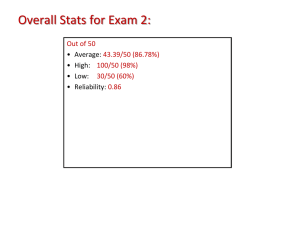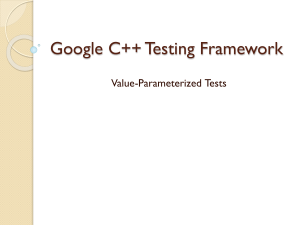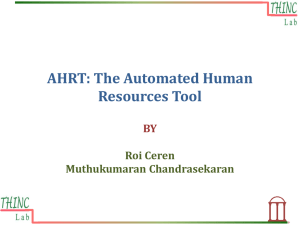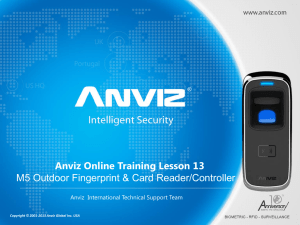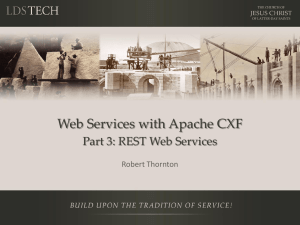JAX-RS
advertisement
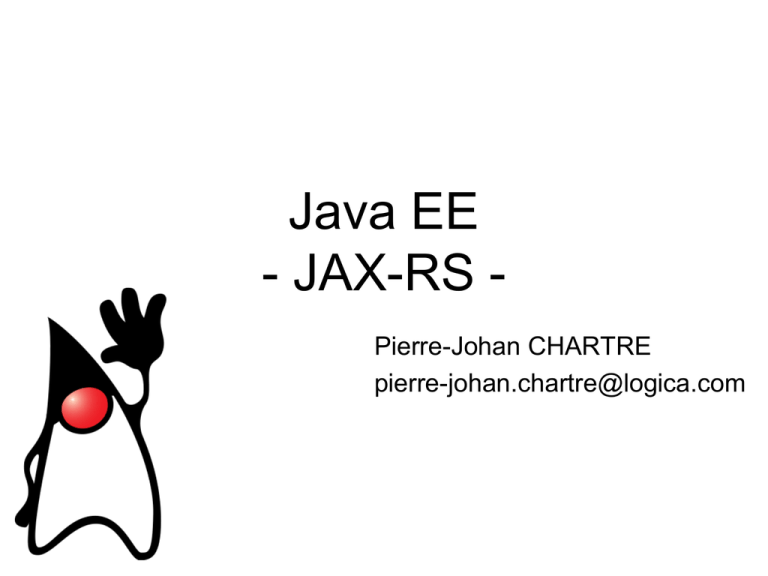
Java EE - JAX-RS Pierre-Johan CHARTRE pierre-johan.chartre@logica.com Web-services • Definition: – “A Web service is a method of communication between two electronic devices over the World Wide Web.” Wikipedia – Web service is "a software system designed to support interoperable machine-to-machine interaction over a network.“ W3C Web-services • Definition: – A Web service has an interface described in a machineprocessable format (specifically Web Services Description Language, aka WSDL). – Other systems interact with the Web service in a manner prescribed by its description using SOAP messages, typically conveyed using HTTP with an XML serialization in conjunction with other Web-related standards. Service-Oriented Achitecture Service-Oriented Achitecture • SOA is a set of principles and methodologies for designing and developing software in the form of interoperable services. • These services are welldefined business functionalities that are built as software components that can be reused for different purposes. SOA example SOA example Web-services • Definition: – W3C has identified 2 major classes of Web services • REST-compliant Web services – the primary purpose of the service is to manipulate XML representations of Web resources using a uniform set of stateless operations; – It’s the Web (2.0) API » a defined set of HTTP request messages along with a definition of the structure of response messages, typically expressed in JSON or XML. • Arbitrary Web services – the service may expose an arbitrary set of operations SOAP Web-services • See http://en.wikipedia.org/wiki/SOAP REST Web-services • REST: Representational State Transfert • is a style of software architecture for distributed systems such as the WWW. • REST has emerged as a predominant Webservice design model. • REST was first described by Roy Fielding in 2000. • It’s a resource-oriented Web-service REST Web-services • Architecture definition • In a REST based architecture everything is a resource. A resource is accessed via a common interface based on the HTTP standard methods. • In a REST based architecture you typically have • a REST server which provides access to the resources • and a REST client which accesses and modify the REST resources. • REST is designed to use a stateless communication protocol, typically HTTP. • REST allows that resources have different representations, e.g. text, xml, json etc. The rest client can ask for specific representation via the HTTP protocol (content negotiation). REST Web-services • HTTP methods • GET defines a reading access of the resource without sideeffects. The resource is never changed via a GET request, e.g. the request has no side effects (idempotent). • PUT creates a new resource, must also be idempotent. • DELETE removes the resources. The operations are idempotent, they can get repeated without leading to different results. • POST updates an existing resource or creates a new resource. REST Web-services • Example – base URI for the web service: http://example.com/resources/ Resource GET PUT POST DELETE List the URIs and Collection URI, such perhaps other as details of the http://example.com/r collection's esources/ members. Replace the entire collection with another collection. Create a new entry in the collection. The new entry's URL is Delete the entire assigned collection. automatically and is usually returned by the operation. Retrieve a representation of the Element URI, such addressed member as of the collection, http://example.com/r expressed in an esources/item17 appropriate Internet media type. Replace the addressed member of the collection, or if it doesn't exist, create it. Not generally used. Treat the addressed member as a collection in its own right and create a new entry in it. Delete the addressed member of the collection. JAX-RS • JSR-311: “JAX-RS: The Java API for RESTful Web Services” • Introduced in Java SE 5: annotation-based • Objective: simplify the development and deployment of web service clients and endpoints. • Part of J2EE 6 • No configuration is necessary to start using JAX-RS JAX-RS API • Specifications • • Annotations to aid in mapping a resource class (a Plain Old Java Object) as a web resource. • @Path specifies the relative path for a resource class or method. • @GET, @PUT, @POST, @DELETE and @HEAD specify the HTTP request type of a resource. • @Produces specifies the response MIME media types. • @Consumes specifies the accepted request media types. Annotations to method parameters to pull information out of the request. All the @*Param annotations take a key of some form which is used to look up the value required. • @PathParam binds the parameter to a path segment. • @QueryParam binds the parameter to the value of an HTTP query parameter. • @MatrixParam binds the parameter to the value of an HTTP matrix parameter. • @HeaderParam binds the parameter to an HTTP header value. • @CookieParam binds the parameter to a cookie value. • @FormParam binds the parameter to a form value. • @DefaultValue specifies a default value for the above bindings when the key is not found. • @Context returns the entire context of the object. Ex.(@Context HttpServletRequest request) JAX-RS API JAX-RS implementations • Implementations • Apache, CFX from Apache • Jersey, from Sun/Oracle (J2EE 6 reference implementation) • RESTeasy, from Jboss • Restlet, created by Jerome Louvel, a pioneer in REST frameworks. • … Practice • http://jersey.java.net/ • http://www.vogella.com/articles/REST/article.html • http://docs.oracle.com/javaee/6/tutorial/doc/gilik.html Keywords WSDL @QueryParam XML SOAP @POST JAX-RS @GET @Path stateless @PUT @DELETE REST


